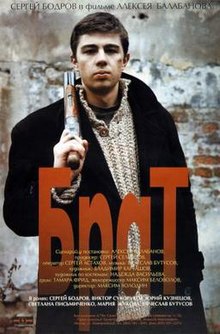LGM-30 Minuteman III ICBM.
The name of every type of missile describes how far it
flies. So an ICBM, or Intercontinental Ballistic Missile can travel at least
3,400 miles carrying one or more warheads.
The standard American land-based ICBM, the Minuteman III, can fly 8,100
miles before releasing between one and a dozen individual warheads on
target.
Minot Air Force Base in North Dakota is the center of a missile launch area spread across
the northern tier of America with 450 missiles carrying thousands of nuclear
warheads. Minot also is home base for B-52 bombers, the main aircraft of the
U.S. nuclear bombing force since the Eisenhower administration.
Our arsenal of ICBMs and other nukes is so overwhelming, that if Putin used nuclear weapons and America responded in kind, the response would not likely come
from the America’s land-based missile and bomber fleet. Lurking in the oceans somewhere are Polaris
submarines armed with Trident ICBMs are already on station, within range,
waiting for the order to counter attack if Russia uses a nuclear
weapon.
My first job in the Cold War U. S. Air Force was live-fire
testing of missiles. I was assigned to
the Aging and Surveillance branch of Air Force Systems Command on Hill Air
Force Base, Utah.
Every Thursday (except
Thanksgiving and Christmas week) we unit fired one stage of a three-stage Minuteman
missile. The missiles were randomly
selected. They were pulled from their
silo and shipped to Utah. On the test
range we froze them, baked them, put them in an altitude chamber, shook them
and finally bolted them to a test pad and lit them up. The test range was on the west side of the
Great Salt Lake. On a clear day, you could see the cloud from firing in Ogden
and Salt Lake City on the east side of the lake.
We made sure the missiles were ready to fly to target.
Armies win or lose wars for any number of reasons, but in
modern war, the difference between winning and losing is often the reliability
of the weapon. Testing those missiles
meant American missiles were ready.
In 1973, at the same time I was on a team test firing every
missile from Sidewinder wing rockets to ICBMs, Israel was hit with a surprise
attack by three Arab armies who outnumbered Israel 100 to 1. Israel repelled the invaders and won that war
for many reasons. But one reason was weapon
readiness.
Taking tanks as an example, when Jordan rolled its
Soviet-made tanks toward Israel across the Golan Heights, one in four of those
tanks broke down before getting to the battle.
For every hundred Syrian tanks, only 75 made it to the fight. Israeli tanks were ready to fight. It really fucks up your war plans if a
quarter of the tanks don’t even shop up, and it affects moral. The other crews
are wondering if their tank will break down. There are few targets easier to hit than a
tank sitting still in a battlefield.
The missiles in U.S. submarines and silos are tested to make sure
they are ready if needed. As many failed
North Korean tests have shown. The short
life of a launched ICBM is full of stress and strain.
When Trident, Minuteman or other ICBMs launch, they begin
the half-hour-long trip to a target on another continent or just very far
away. The three-stage Minuteman is in
boost phase for five minutes, flying out of its silo on the North Dakota
prairie to target. By then end of boost phase, the three-stages have burned
their solid fuel and fallen away. The
warhead has accelerated from 0 to more than 15,000 miles per hour and has
broken through earth’s atmosphere, flying in space.
In the launch phase, the rocket is subject to an average of 5gs
of acceleration with two big jerks when one stage burns and falls away and the
next stage lights up. The skin temperatures on the missile zoom up from 70
degrees to hundreds of degrees as speed approaches 15,000 mph. As the final
stage burns and separates the warhead bursts out of the atmosphere into space,
buffeting the warhead at the same time it rapidly cools as it leaves the
atmosphere.
The warhead is now in ballistic phase, coasting at 15,000+
mph to re-entry and target. If the U.S. launched a Trident Missile from
somewhere in the some ocean it would now be flying thousands of miles in 10 or
20 minutes toward its target.
Less than 100 miles from target, the terminal or re-entry
phase begins. At this point the warhead
drops back into the atmosphere heats to thousands of degrees from re-entry
friction then delivers one or a dozen warheads to target. The already baked and frozen warhead heads to
thousands of degrees and shakes with hundreds of gs of vibration as it drops
back into the upper atmosphere.
American missiles are thoroughly tested for this horrendous
ride. Even so, solid fuel missiles are big cans of gunpowder designed to burn
rather than explode. I have seen, and
almost been killed by, missiles that blow up when they were supposed to burn.
But when they reach their target, ICBMs are apocalyptically deadly.
One Trident ICBM with eight warheads could turn Moscow into rubble. Each Polaris submarine can carry 24 Trident missiles. Each of the multiple warheads are hundreds of
times more powerful than the nukes dropped on Hiroshima and Nagasaki in World
War II. And one submarine fully loaded
with Trident missiles can deliver 192 warheads on target.








